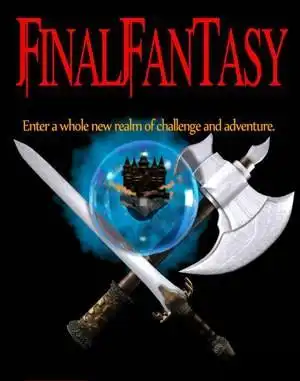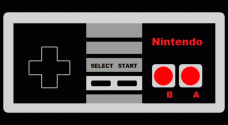Why Final Fantasy Still Casts a Spell on Retro Gamers
Step back in time with us, fellow adventurers, to an era when pixel art reigned supreme, turn-based battles were king, and sprawling narratives unfolded across multiple discs or cartridges. Among the pantheon of classic RPGs, one series stands tall, its name synonymous with epic journeys, unforgettable characters, and soaring musical scores: Final Fantasy.
For decades, this franchise has captured the hearts and imaginations of players worldwide. But why does it continue to hold such a special place for those of us who cut our teeth on controllers from the 80s and 90s? Let's explore the magic that makes classic Final Fantasy games enduring treasures.
The Humble Beginnings: A Symphony Starts (Final Fantasy I)
Before the sprawling worlds and cinematic cutscenes, there was a quest born of necessity. Released in 1987 (or 1990 in North America on the NES), the original Final Fantasy was Square's last-ditch effort, hence the name. It laid the groundwork for so much of what we now take for granted in JRPGs:
- The Four Heroes of Light: A simple, yet effective prophecy driving the plot.
- Job System: Choosing your party's classes from the outset – Warrior, Black Mage, White Mage, etc. – defined your strategy.
- Crystal Lore: The elemental crystals became a recurring motif throughout the series.
- World Map Exploration: Sailing ships, airships, and discovering hidden locations.
While the NES version could be a bit clunky (remember attacking enemies who were already defeated?), later versions, like the GBA remake, smoothed out some rough edges, proving the core adventure held up. It was a foundational game, setting the stage for greatness.
The 16-Bit Renaissance: Storytelling Reaches New Heights (Final Fantasy VI)
Often cited as one of the greatest RPGs ever made, Final Fantasy VI (released as Final Fantasy III in North America on the SNES in 1994) was a masterpiece of the 16-bit era. It pushed the Super Nintendo to its absolute limits, delivering:
- An Ensemble Cast: Instead of just a few heroes, you had a sprawling cast of over a dozen playable characters, each with their own backstories and motivations.
- Mature, Complex Narrative: Dealing with themes like industrialization, magic vs. technology, loss, and nihilism, FFVI's story felt incredibly deep for its time.
- Kefka Palazzo: One of gaming's most memorable and truly terrifying villains. His chaotic energy and devastating actions drove the plot in unpredictable ways.
- Active Time Battle (ATB) Refined: The combat system felt more dynamic than pure turn-based, requiring quicker decisions.
- Legendary Soundtrack: Nobuo Uematsu's score for FFVI is iconic, perfectly capturing the mood of every scene, from tragic opera house moments to epic airship voyages.
Playing FFVI today, whether on original hardware or a modern port, is a reminder of how much storytelling power could be packed into sprites and chiptunes. It's a timeless adventure.
The 3D Revolution: Breaking All the Rules (Final Fantasy VII)
Then came 1997. Square made the bold move to jump from Nintendo to Sony's PlayStation, and the gaming world changed forever with Final Fantasy VII. This game wasn't just popular; it was a cultural phenomenon.
- Stunning (for the time) 3D Graphics & FMVs: The pre-rendered backgrounds and full-motion video cutscenes were mind-blowing, giving the game a cinematic feel previously unseen.
- A Dystopian/Sci-Fi World: Moving away from traditional fantasy, Midgar and the world of Gaia felt fresh and modern, blending magic with advanced technology.
- Memorable Characters: Cloud, Tifa, Aerith, Barret, Sephiroth – these characters became instantly recognizable icons.
- The Materia System: This innovative system allowed unparalleled character customization, letting you slot orbs to gain spells and abilities, mixing and matching to create unique builds.
- Risky Storytelling: FFVII wasn't afraid to take major narrative swings that genuinely impacted players.
FFVII wasn't just a game; it was an event. Its success cemented the PlayStation's dominance and proved that JRPGs could be mainstream hits globally.
Why We Keep Coming Back
So, why do these old Final Fantasy titles resonate so strongly with retro gamers?
- Nostalgia: Pure and simple, they remind us of a specific time in our lives and gaming history.
- Masterful Storytelling: Even with technical limitations, the narratives, characters, and emotional beats were incredibly compelling.
- Iconic Music: Uematsu's soundtracks are legendary and instantly transport you back to these worlds.
- Engaging Gameplay: The ATB system, customization options like Materia or Espers/Magicite, and the satisfying progression loop hold up.
- Historical Significance: These games weren't just fun; they were influential, shaping the JRPG genre and gaming as a whole.
How to Revisit These Worlds Today
Thankfully, Square Enix hasn't left these classics in the past. You can find many of these games on modern platforms:
- Pixel Remasters: Beautiful 2D remasters of FF1 through FF6 are available on Steam, mobile, and consoles, offering modern conveniences while preserving the core experience.
- Modern Ports: FFVII (the original) is available on Steam, mobile, and various consoles.
- Collections: Games like Final Fantasy Anthology (PS1) or Final Fantasy Dawn of Souls (GBA - including FF1 and FF2) offer classic versions.
- Original Hardware/Emulation: For the purists, digging out old consoles or using emulators (like SNES9x or ePSXe) lets you experience them exactly as they were.
Whether you prefer the foundational simplicity of FF1, the narrative depth of FFVI, or the revolutionary impact of FFVII, there's a classic Final Fantasy waiting to whisk you away on an epic adventure again.
Frequently Asked Questions
Q: Which classic Final Fantasy should I play first if I'm new? A: FFVI or FFVII are often recommended for their strong stories and refined gameplay, but the FF1 Pixel Remaster is a great starting point to see where it all began.
Q: Are the Pixel Remasters good? A: Generally yes! They update the graphics and sound while adding features like auto-battle and maps, making them very accessible for modern players, though some prefer the original sprites.
Q: Is there a lot of grinding in the older games? A: FF1 can require some grinding, especially early on. FFVI and FFVII are generally better balanced and require less repetitive grinding compared to some other RPGs of the era.
Q: Where can I buy these games digitally? A: The Pixel Remasters and FFVII are available on platforms like Steam, PlayStation Store, Nintendo eShop, and Xbox Games Store, as well as mobile app stores.
The legacy of Final Fantasy is undeniable. These classic entries aren't just relics of a bygone era; they are vibrant worlds filled with stories, characters, and music that continue to inspire and entertain. Dust off that controller, boot up a remaster, or fire up an emulator – the adventure awaits!


